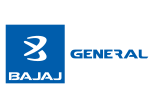Maturity Amount Of Money Back Plans: Here’s Everything You Should Know
Table of Contents
The maturity amount is the total sum that the life insured, or his representative or dependent in the event of the policyholder's passing, will receive upon the plan's maturity in the shape of the death benefit. The sum promised, which is determined by the client and the business at the time the plan is purchased, the reward amounts or profits gained over the policy's tenure, and any additional bonuses the Corporation may have indicated are added to determine the maturity amount.
Things to Consider while Checking Money Back Plan
There are a few things to keep in mind when looking up the Maturity Amount.
- The insurer has complete discretion in selecting any user ID when setting up an account. In addition to characters, digits, and special characters like a mark, hyphen, or underscore, the user ID can also contain spaces.
- The webpage will request the specific plan's policy number. As a result, the policyholder should always be prepared with the policy's specifics.
- When creating a user account, the password's length should fall between eight and thirty characters. In order to stop any kind of account fraud, the password should be simple to remember, distinctive, and confidential.
- Finally, the user ID entered at registration needs to be distinct and not identical to any other customer's user ID. The customer will be informed if a particular user ID is already in use and given the option to choose another id Number for the account.
Claiming Maturity Amount
Maturity claim notifications are normally sent two months before the policy's expiration date by the Corporation's nearest servicing location. In order for the full amount to be paid to the client before the maturity claim deadline, the life insured or his reliant must show the released invoice in form number 3825 with the existing policy papers at least one month before the policy's due date in the event that the policyholder passes away before the end of the policy's term.
A few additional documents must be submitted with the policy papers, including a NEFT mandate form, a cancelled check, or a duplicate of the policyholder's lender passbook, as well as identity proof for the policyholder and the nominee, as well as a death certificate in the event of the policyholder's death.
Checking Maturity Status
Because of the high probability that the person insured may fail to pay his payments on time due to the hectic schedules of daily life, it is imperative for each insurer to keep an eye on the policies at regular intervals.
In order to be informed about any modifications to the plan, it is crucial that the client examine the status once every two months. Additionally, if the person insured misses to cover the premium after the time limit, which is typically fifteen to thirty days in accordance with the company's rules, the policy may lapse, depriving the policyholder and his family of the benefits provided by the plan.
Endnotes
In the end, policyholders should be aware of any revisions that may also have an impact on the policy to which they are linked. For the aforementioned reasons, he should thoroughly research the insurance he buys and choose a program that can satisfy all of his needs in order to reap the benefits of the policy in full.
Also Read:




























































